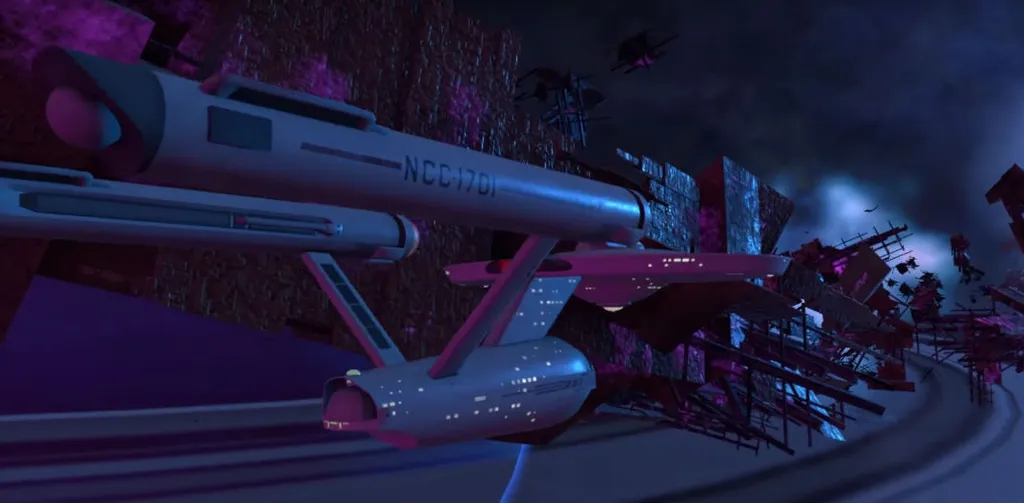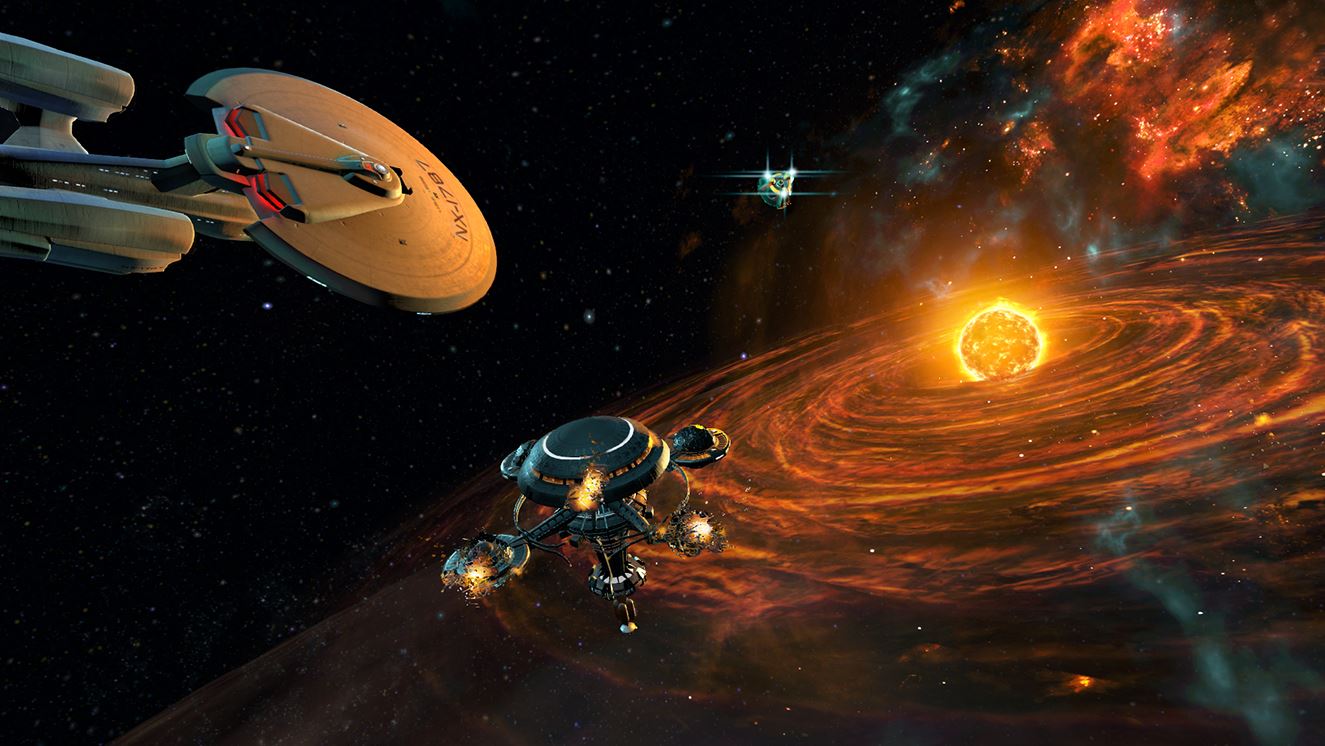In this weekly series we will look at a different specific aspect of Star Trek: Bridge Crew with each entry, such as the individual roles and game modes, to provide a bit more clarity than a standard preview can provide. Last week was Tactical, but this week we focus on the Helm role.
Star Trek: Bridge Crew from Ubisoft and Red Storm Entertainment is less than a month away from its debut, set to release on May 30th, 2017, for the PlayStation VR (PSVR), Oculus Rift, and HTC Vive. In addition to releasing for all three major headsets on the same day it will also support full cross-platform multiplayer just like Eagle Flight and Werewolves Within, also from Ubisoft.
For this week’s entry in Trek Tuesdays, we’re looking at the Helm role. This position in charge of controlling the ship’s movement through space. Think of it kind of like the driver’s seat, which shoulders a lot of responsibility. As the Helmsman, you can control not only the ship’s speed, steering, and direction in close-quarters movement, but also line up trajectories for impulse (like a short-range warp drive) and long-range warp jumps.
Helm is really the only role in Star Trek: Bridge Crew that feels like you’re always active doing something. No matter what’s going on, whether it be combat, exploration, or something else, you’re probably in charge of guiding the ship somewhere. Adjusting speeds, changing course, tweaking elevation, and surveying the map will take up your time when you’re not following the captain’s direct orders.
When combat hits, that’s when the action really ramps up. Since the Tactical officer to your right needs to maintain steady fire on enemies, you’ll have to be sure they don’t manage to flank you or flee from the fight. Ships don’t exactly maneuver quickly given their size, but you’d be surprised by how intense battles can get.
Other than flying around space, dodging mines and other ships, and tracking down enemies to take out, there isn’t much else going on for the Helmsman. Conceptually it’s probably the easiest role to learn from a pure mechanical perspective as steering and maneuvering is something most people are familiar with, but it’s not exactly ideal for the easily distracted of your crew.
When playing without a full crew, Helm is one of the positions that needs constant attention. If you’re in combat you can tell the A.I. to chase an enemy or avoid something, as well as which speed to set, but it doesn’t get much more nuanced than that. I found myself needing to take over that chair more than others just to make sure we were staying mobile. Sitting still in the middle of space, surrounded by enemies, is a terrible idea.
Next week we’ll look at the Engineer position, giving you a better look at what goes into managing your ship’s power and other systems. Which role do you most want to play in Star Trek: Bridge Crew once it releases next month on May 30th? Let us know down in the comments below!



























